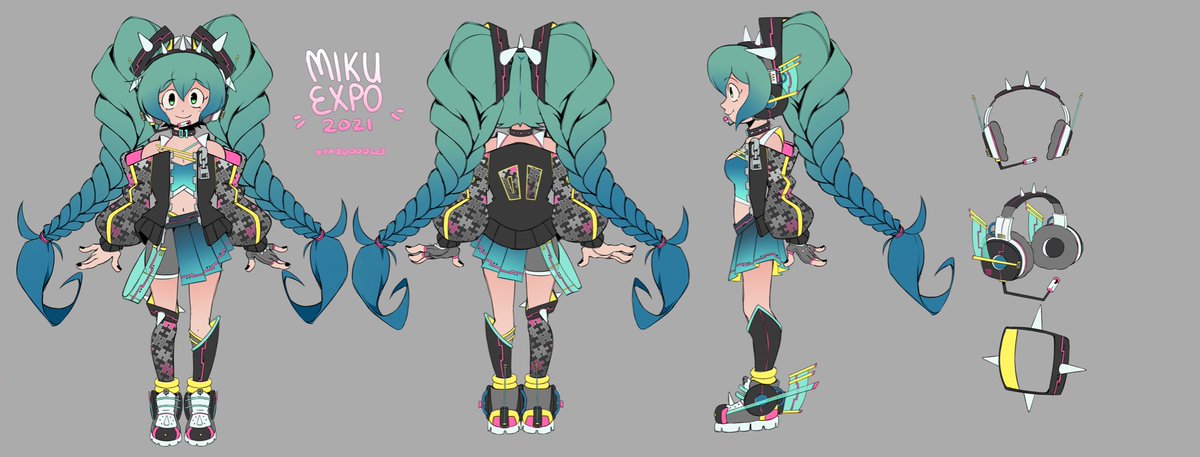
- Character Item: Chicken drumstick As her name suggests, her voice is meant to sound 'sweet' and she has a variety of uses within music. She was the first vocaloid created using Yamaha’s Vocaloid2 upgraded software.
- VY1 (Vocaloid 5) Yamaha Japanese Unisex ('feminine' sounding voice) July 12, 2018 VY2 (Vocaloid 5) Yamaha Japanese Unisex ('masculine' sounding voice) July 12, 2018 Haruno Sora: AH-Software Japanese Female Kikuko Inoue: July 26, 2018 Meika Hime/Mikoto: Gynoid Co., Ltd. Japanese Unspecified ('feminine' sounding voices) Kotori Koiwai: March 30, 2019.
| Developer(s) | Yamaha Corporation |
|---|---|
| Initial release | January 15, 2004 |
| Stable release | |
| Operating system | Windows XP / Vista / 7 Apple iOS (iVocaloid, Japan Only) |
| Available in | English, Japanese, Spanish, Korean, Chinese |
| Type | Musical Synthesizer Application |
| License | Proprietary |
| Website | vocaloid.com |
Vocaloid is a music software that's used to make vocals for music. It was created by Yamaha, a company that sells musical instruments, as well as other products. The user can type in lyrics and a melody and it will synthesize singing. Voicebanks for Vocaloid are made by recording samples of singers.[1]
So far, there are over 92 Vocaloids officially confirmed. Most Vocaloids are Japanese and more of them learned English as their second language due to various producers worldwide.
Vocaloid was developed partially through a research project led by Kenmochi Hideki. The people involved in this project later created the company Voctro Labs. Vocaloid was originally not supposed to be a commercial product, but with the help of Yamaha, became the program we know today.
Diagnoses on the theme of VOCALOID.Shows diagnoses taken by the most people (we currently highlight popular diagnoses). Check popular themes Keyword search:「VOCALOID. Communications and all the characters included belong to Cool as heck ghost on Soundcloud. Last chaos ep3 server erstellen. 0 Vocaloid Anime. Hatsune Miku (初音ミク) The heart and soul of Vocaloid, Hatsune Miku launched the voice.
Vocaloid originally only had an English version available, with two English voicebanks, Leon and Lola, being released for it. This changed later on with the release of Kaito and Meiko, which were both Japanese voicebanks.
Vocaloid is meant both for professional and amateur music makers, since Vocaloid is easy to use, so the only limit is the user's skill. Music groups like Livetune and Supercell have made music using Vocaloid voicebanks.
Vocaloid 5 Characters List
Technology[change | change source]
Vocaloid works by taking samples of singers and separating them into parts. These parts are used to form words. Vocaloid voices can be made to sound more realistic by using vibrato and changing things like how breathy a voice sounds.
Vocaloid 5 Characters Anime
History[change | change source]
Vocaloid[change | change source]
Yamaha started working on Vocaloid in 2000. They announced it at a German music festival. Vocaloid was originally nicknamed 'Daisy' as a reference to the song 'Daisy Bell', but eventually they got rid of that name and decided to use 'Vocaloid' instead.
Vocaloid 2[change | change source]
Vocaloid 2 was announced in 2007. The way vocals were synthesized was changed, and so was the way the program looked.

Vocaloid 3[change | change source]
Vocaloid 3 was released on October 21st, 2011. A lot of companies that made voicebanks for Vocaloid 2 upgraded their voicebanks to Vocaloid 3 because it sounded better.
Vocaloid 4[change | change source]
Vocaloid 4 was released in 2015, and added a feature which let voicebanks made specifically for Vocaloid 4 sound like they were growling.
Vocaloid 5[change | change source]
Vocaloid 5 was released in 2018, with an overhauled user interface and substantial engine improvements.
References[change | change source]
- ↑'Could I Get That Song in Elvis, Please?'. The New York Times. 23 November 2003. Retrieved 30 December 2016.
Other websites[change | change source]
- Official website(in Japanese)
- Official website (in English)
(note: this entry is about Maki as a character (Tamiyasu Tomoe). Jam Band will briefly be touched along with the other members, but overall this is about the Voiceroid.)
•
Vocaloid 5 Characters

Tamiyasu Tomoe (民安ともえ), better known as Tsurumaki Maki (弦巻マキ), is a VOICEROID developed and released by AH-Software on November 10th, 2010. Unlike the two Voiceroids that came before her, Tsukuyomi Ai and Tsukuyomi Shouta, Maki is aimed at an older audience and does not have a censorship filter in her program.
Note: While the product name is Tamiyasu Tomoe (the same name as her voice provider), the character herself is named Tsurumaki Maki.
Maki is eighteen years old and the leader of Jam Band. Jam Band is a music group consisting of Maki herself (vocals and guitar) and four other girls: Amane Kana (bass), Tsutsumi Rizumu (drums), Tsutsumi Kanon (keyboard), and Mitarashi Mari (guitar). Their mascot is a little robot named Robota.

Jam Band was created as a special edition of the program Music Maker, which is a DAW for producers to make music with. Multiple editions of the program have been released, with the most recent being Music Maker MX2 Producer Edition.
As a VOICEROID product, Tamiyasu Tomoe was slow to catch on. It wasn't until the release of Yuzuki Yukari a year later that VOICEROID as a whole took off in popularity, and now Maki is the second most popular Voiceroid character.
Examples of Usage
Other
On AI-JP's website, on the demo page, the character named 'Maki' who uses Maki's voice has emotion parameters like the V2 Voiceroids have. She has sliders for happiness, sadness, and anger. Whether these will be released in a potential V2 update for Maki remains unknown.
Maki, Yukari, Aoi, and Akane appeared in the mobile phone game Hagane Orchestra as instructor characters and later gacha characters players could collect and use. Hagane Orchestra's servers have since shut down, however, and the game is no longer available to play.
Maki and Yukari guest starred in episode eight of Hagane Orchestra's anime.
Maki also has exVOICE files that are available as a free download on AHS' website.
•
•

•
